How to plant a water lily (nymphea) in a pond and care for it?
Nymphaea, water lily, water lily, mermaid flower - a perennial growing in reservoirs where there is no strong current, in the backwaters of slow rivers, and more recently in mini-ponds that adorn summer cottages. Planting a delicate water lily is not difficult for a nymph, she needs minimal care if you create suitable conditions for a mermaid flower.
How to choose a nymph for planting?
Numerous varieties of nymphea, suitable for growing in artificial reservoirs, are conventionally divided into three groups according to plant size.
- Dwarf, or miniature. The diameter of the flowers is from 3 to 15 cm, suitable for ponds from 15 cm to half a meter deep. The color of the flowers depends on the variety - white, red, yellow.
- Average. A flower up to 18 cm in size, planted to a depth of 60 cm. The flowers are pink, red, yellow.
- Large, with a flower diameter up to 25 cm. For such nymphs, the optimal depth of the reservoir is at least one meter. Most varieties have yellow and crimson flowers.
All groups include both exotic, heat-loving and winter-hardy varieties. The following types of winter-hardy water lilies are popular among gardeners in Russia.
- Nymphaea tetragona - tetrahedral water lily, or small. White, rarely pink, small flowers bloom by noon and remain open until evening. Great for decorating mini ponds. The main difficulty in growing is that it is difficult to divide the rhizome, which often forms lateral processes.
- N. candida (white water lily)characterized by high frost resistance. It is characterized by a slowly growing horizontal rhizome. No less popular is her charming relative, the Swedish red nymphea, who loves cold water and lots of sunlight.
- N. odorata, fragrant water lily, tolerates frosts down to -30 ° C without problems. It has several subspecies, differing in the size and color of the inflorescences. The rhizome is provided with strong lateral roots.
- Nympheae tuberos (knobby nymphea) - the progenitor of a significant number of varieties and hybrids. The main advantage is that the rhizome is easily divided.
The following hybrids are suitable for growing in temperate latitudes.
- Maylablooming profusely in August. The pink inflorescence of 18 cm is shaped like a star. Rhizome growth is slow.
- Vanvis - unpretentious, profusely flowering variety. Pink petals with longitudinal yellow stripes. No less decorative to pour - with marble veins. The size of the inflorescence is about 20 cm, the planting depth is 60-100 cm.
- Snowflake (snowflake), similar to an aster due to the narrow long white petals. Abundant flowering begins in the second half of summer. tolerates severe winters well.
- Violicious - a rare species, purple or blue. It is able to survive the winter under a layer of ice after 2-3 years of acclimatization.
When choosing a water lily for planting, first of all, the conditions of the reservoir are taken into account, and then the climatic conditions, because even heat-loving exotics can easily arrange a safe wintering place.
Planting a nymph
The best option is to purchase a ready-made plant placed in a pot at the garden center. Growing from seeds is complicated not so much by the laboriousness of the process as by the need for special conditions for their germination.
Place in the pond and water
All nymphs are lovers of sunlight, light partial shade during hot hours is permissible.
The reservoir can be filled with tap water. Fortunately, the nymphs do not particularly find fault with the quality and composition of the water.
Pot and soil selection
For planting nymphs choose plastic pots, the diameter of which is greater than the height.This point is important to take into account, since the rhizomes of water lilies grow in width, and not in height. In this case, it is not at all necessary that the planter be solid, even a large number of small holes is not an obstacle.
Too large a container will not work for a simple reason: from time to time it has to be removed from the water, that is, taking into account the weight of the soil and water, it must be lifting. Too small pots will affect the size of the flowers: a small rhizome - medium-sized inflorescences.
The soil for planting needs highly fertile, oily, clayey, it is less washed out by water. In preparation for planting lilies, the soil is mixed with organic fertilizers - humus or biohumus. The standard proportion of soil and organic matter is 7: 3.
Landing algorithm
The process of planting a nymphea seedling is simple. The container is filled with soil, not reaching the edges of 3-4 cm. A hole is made in the center and the rhizome is lowered there, covered with soil. If there are remnants of “native” soil on the seedling, they are not washed off.
A 2-3-centimeter layer of sand is poured over the soil, which will protect the substrate from washing out. If the pond is inhabited by fish or is often visited by frogs, a layer of pebbles is laid on top of the sand.
The larger the rhizome of the water lily, the greater the depth of its planting should be. In this case, it is imperative that the leaves remain on the surface of the water.
If the pond in the area is deep (more than a meter), you can plant water lilies directly in the bottom soil. Wire staples and stones are used to anchor the root.
Placing a pot with a water lily in the reservoir is carried out in stages.
- At the first stage, the pot is placed at a depth corresponding to the height of the pot plus 10-20 cm using large stones or stands.
- As the leaves grow back, the container is moved to a greater depth.
- When the foliage grows so much that the pots sink to the bottom, ground nymphs are planted.
Most varieties and hybrids of nymphea completely take root in a few weeks and begin to actively bloom in due time.
Ponds with fountains are not suitable for growing nymphs. The splashes falling on the leaves overlap the stomata located on the upper side of the leaves, the plant begins to suffocate, the leaves rot.
Caring for the nymphea in the pond
A very pleasant fact for every summer resident: caring for a nymph is minimal. Indeed, she does not need watering, she does not need to weed out, loosen the soil. All care consists of thinning the shoots and removing old, wilting leaves and faded flowers.
All the nutrients necessary for the nymphs for full development are laid in the substrate during planting (transplanting).
Most often, bone meal is used for fertilization. But experts do not recommend using it or any other organic matter, since it provokes the development of decay processes in the reservoir.
The best feeding option is prolonged-release fertilizers that slowly dissolve in water. They are added directly when preparing the soil. Special fertilizers for water lilies (rarely on sale): Osmocote; Basacote; Plantella (sustained release); Ava (prolonged action).
Using them in accordance with the instructions provides the plant with nutrients for 2-3 years.
An alternative is the use of flower fertilizer sticks, they are buried next to the roots. Complexes with a high potassium content are chosen because they provide long flowering and rich color of inflorescences. Water lilies are fed with sticks once a year - in the spring.
Top dressing is not necessary if the pond is in a natural area, since bottom sludge is the most suitable fertilizer.
Wintering water lilies
Water lilies are sent from the reservoir to the premises for wintering in three cases:
- tropical specimens are grown that love warmer water;
- rare species, which in case of failure it is a pity to lose;
- the depth of the pond is less than 80 cm.
Containers are removed from the water long before the onset of cold weather - nymphs, especially tropical ones, love a warm environment. In mini-ponds, the water cools down very quickly, therefore, in temperate latitudes, the nymphea is removed for wintering in the second half of September, in the south - in October. But in the fertile conditions of the Black Sea coast of the Krasnodar Territory and in the south of the Crimea, nymphs quietly winter even in shallow ponds.
It is easy to organize the wintering of plants: they are placed in a bucket of water or covered with moist moss roots, packed in a bag and kept in a cool basement. For tropical species, aquariums are used where the water temperature is maintained at 10 ° C and supplementary lighting is organized.
Transfer
Transplant to nymphs growing in pots. As the rhizome grows, the volume of the container becomes small for it, as a result, the leaves and flowers of the water lily become smaller.
Container lilies are transplanted every 2-3 years. The process is not difficult - the container is taken out of the reservoir, the rhizome is removed. Further, it can be transplanted entirely by taking a larger container and transferring it along with an earthen lump. Or you can divide it: pieces with 2 or more kidneys are cut off with a sharp disinfected instrument, the delenki are seated in separate containers.
Dividing the rhizome is the easiest and most effective way to propagate a mermaid flower.
A novice gardener can also plant a water lily on his site. She does not require special attention to herself - from the point of view of care, of course, because you can endlessly admire the delicate beautiful flowers.


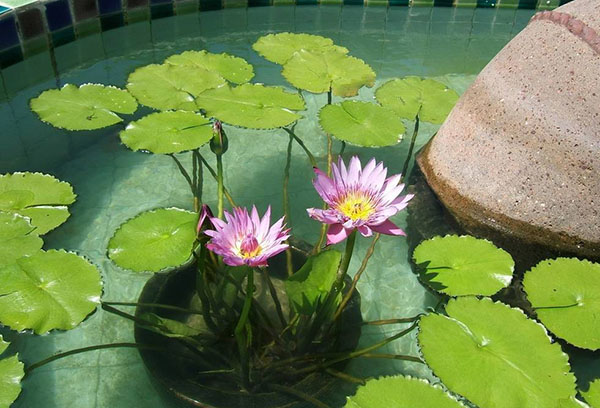
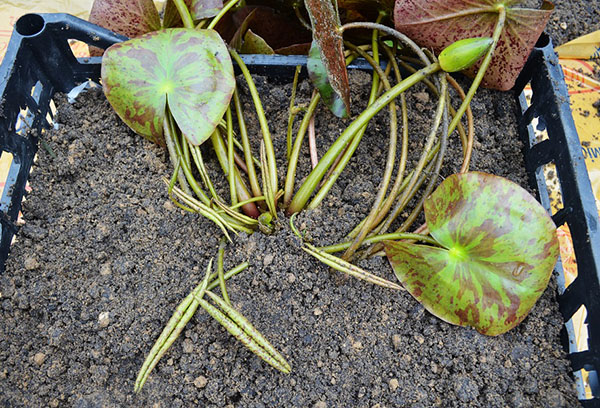
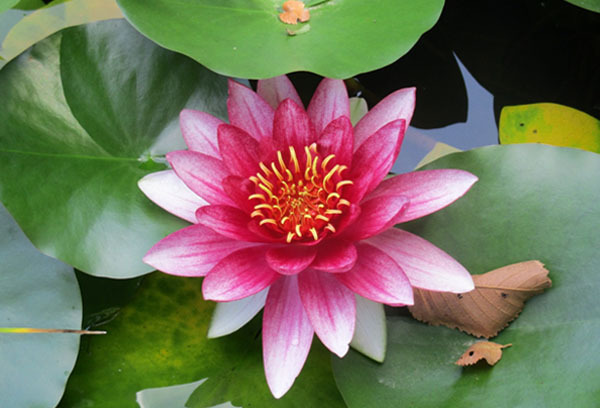
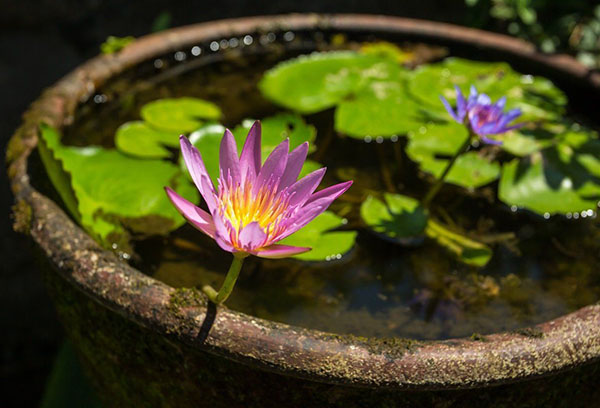
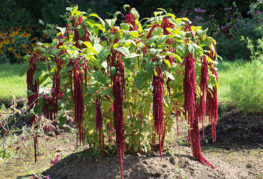
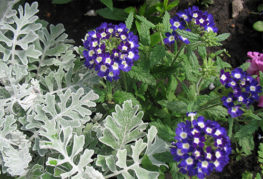
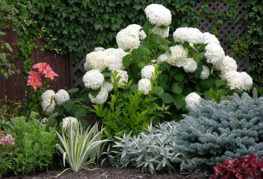
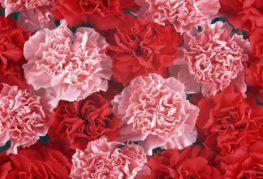

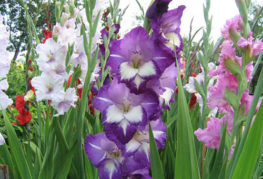
and will be published shortly.